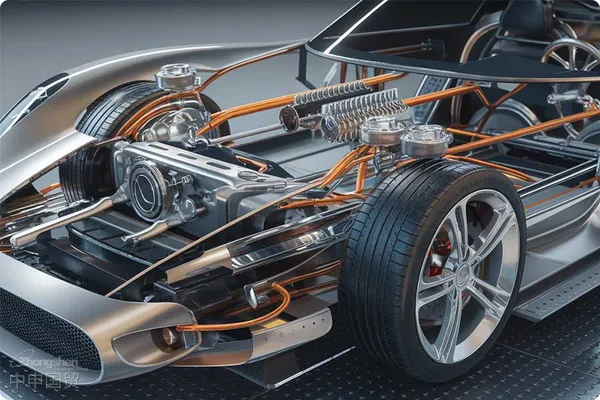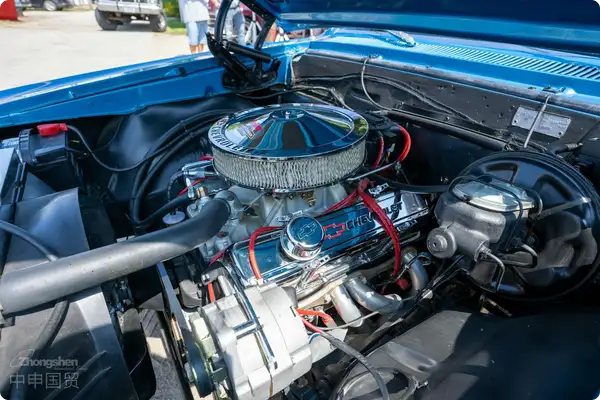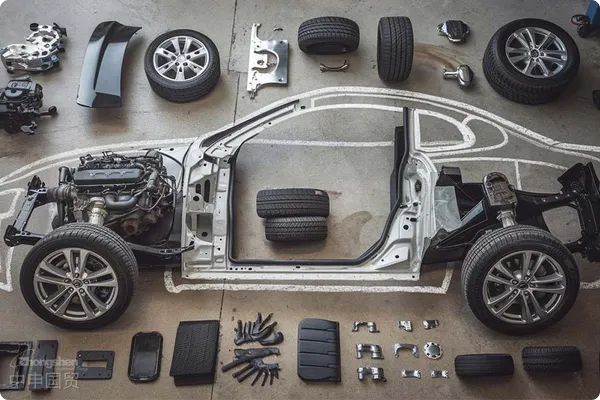- Shanghai Zhongshen International Trade Co., Ltd. - Two decades of trade agency expertise.
- Service Hotline: 139 1787 2118

Against the backdrop of deep integration in the global automotive supply chain, China - as the worlds largest automotive producer and consumer market - now imports over $12 billion annually in brake system components (source: CAAM 2023 Annual Report). As safety-critical components, imports of brake discs, pads, ABS sensors etc. present both significant market opportunities and complex compliance challenges. Drawing on 20 years of agency experience, this article provides in-depth analysis of key import processes and solutions.
I. Industry Status and Import Trend Insights
Internationally - recognized Safety StandardsMarket Characteristics Analysis
- High technical barriers: EU E-mark, US DOT, and China CCC certifications form triple access thresholds
- Supply chain reconstruction:New energyElectro-hydraulic/electromechanical brake system (EHB/EMB) imports grow 35% annually, traditional fuel vehicle parts decline to 62% share
- Geographic distribution: German suppliers dominate 58% of high-end market, Southeast Asian mid-range products gain price competitiveness
Regional Mandatory CertificationsTypical Importer Pain Points
- Certification discrepancies causing customs seizures (annual losses exceed 30 million yuan)
- Uncontrolled hidden costs under CIF terms (27% of cases show port charges exceeding budgets by 40%+)
- OEM emergency order lead time demands (72-hour clearance requirements grew 200%)
II.Import RepresentationCore Value Matrix
1. Closed-Loop Compliance Management System
- Pre-review mechanism: Dynamic supplier qualification database (covering 37 standards including ISO/TS 16949)
- Technical document conversion: Precise adaptation from EU Directive 2007/46/EC to GB 12676-2014
- Risk alerts: Intelligent material report-HS code matching system (error rate reduced to 0.2%)
2. Three-Dimensional Cost Optimization Model
- 1. Tariff Planning: Case Study of 14% Tax Rate Reduction Utilizing ASEAN Free Trade Agreement
- 2. Logistics Solution: Combined Use of Bonded Warehousing + JIT Distribution to Reduce Inventory Costs by 28%
- 3. Exchange Rate Hedging: Locking in 3-Month Forward Foreign Exchange Contracts to Avoid 5.7% Exchange Loss
4. 3. Emergency Service System
- 5. 48-Hour Emergency Customs Clearance Program (Tianjin Port/Yangshan Port Record-Based Clearance)
- 6. Quality Dispute Resolution: Third-Party TUV Testing + Legal Team Coordination
- 7. Supply Chain Alternative Solutions: Prepared List of 5 Alternative Suppliers from Different Countries
8. III. Detailed Explanation of Full-Process Service Nodes
9. Stage 1: Supplier Compliance Review (Pre-shipment)
- 10. In-Depth Factory Audit: Verification of Production Equipment Calibration Records (Focus on CNC Machine Accuracy ≤0.01mm)
- 11. Document Package Review: Including but Not Limited to Material Certificates, RoHS Test Reports, IMDS Data Sheets
12. Stage 2: Customized Transportation Solutions
- 13. Cost-Effective Solution: 40HQ Container Loading Optimization (Brake Pad Loading Capacity Increased to 28m3)
- 14. Emergency Solution:China-Europe Railway Express15. + Air Intermodal (Transit Time Reduced to 12 Days, Cost Savings of 35%)
16. Stage 3: Intelligent Customs Clearance System
- 17. Big Data Pre-Classification: AI Model Trained on 200,000 Historical Declaration Records
- 18. Tax Visualization: Automatic Breakdown of Tariff, VAT, and Consumption Tax Proportions
- 19. Automatic Generation of AEO-Certified Declaration Documents
20. Stage 4: Localized Value-Added Services
- 21. Technical Documentation Localization: Conversion Service from German DIN Standards to Chinese GB Standards
- 22. Quality Traceability System: Component ID Codes Integrated with OEM MES Systems
23. IV. Case Study Review
Case Background
24. Emergency Import of Brake-by-Wire Modules (HS 87083100) by a New Energy Vehicle Manufacturer, Encountering:
- 25. Expired ECER90 Certification Documents from Korean Supplier
- 26. Classification Dispute at Shanghai Port Causing Demurrage
- 27. OEM Production Line Facing Shutdown Risk
Solutions
- 28. Completed Within 72 Hours:
29. ① Coordinated with KATSI to Reissue Certification Documents
30. ② Initiated Pre-Classification Ruling Procedure (Provided 10 Similar Product Customs Rulings)
31. ③ Activated Emergency Inventory from Qingdao Bonded Warehouse
Achievement Data
- 32. Customs Clearance Time Reduced from 15 Days to 52 Hours
- 33. Avoided Production Line Shutdown Losses of Approximately 18 Million CNY
- 34. Established Long-Term Pre-Classification Ruling Mechanism
3V. V. Industry Trends and Response Strategies
36. 1. Technological Change Response
- 37. Formation of Smart Braking System Expert Team (Including 5 PhD-Level Technical Consultants)
- 38. Development of VR Remote Factory Audit System (70% Improvement in Audit Efficiency)
39. 2. Green Supply Chain Construction
- 40. Carbon Footprint Accounting System Integration (Compliant with EU CBAM Regulations)
- 41. Low-Carbon Transportation Solutions:Maritime Transportation42. Carbon Emission Monitoring + Carbon Credit Purchase Services
43. 3. Digital Service Upgrade
- 44. Blockchain Traceability Platform: Full Process Tracking from Component Production to Transportation to Warehousing
- 45. Intelligent Early Warning System: Real-Time Monitoring of 200+ Risk Indicators (From Exchange Rate Fluctuations to Port Strike Alerts)
Conclusion
46. Under the wave of automotive industry intelligence, electrification, and globalization, professional import agency services have evolved from mere customs clearance executors to strategic supply chain partners for enterprises. Choosing service providers with technical compliance capabilities, emergency response systems, and cost optimization models will become a key decision for brake system importers to build core competitiveness.
Related Recommendations
? 2025. All Rights Reserved. Shanghai ICP No. 2023007705-2  PSB Record: Shanghai No.31011502009912
PSB Record: Shanghai No.31011502009912









